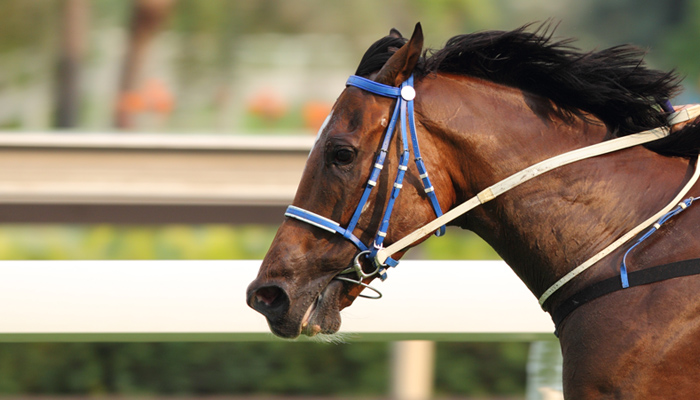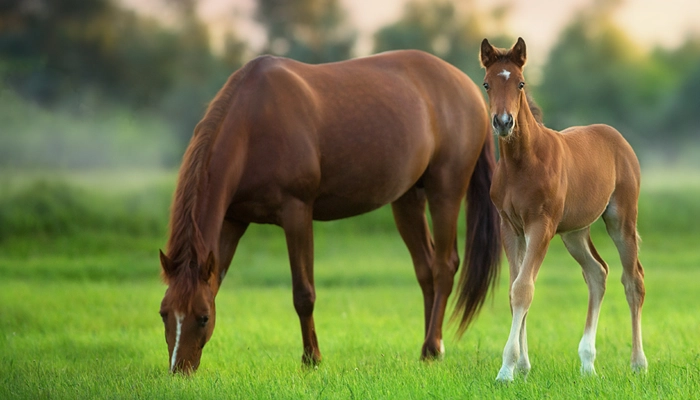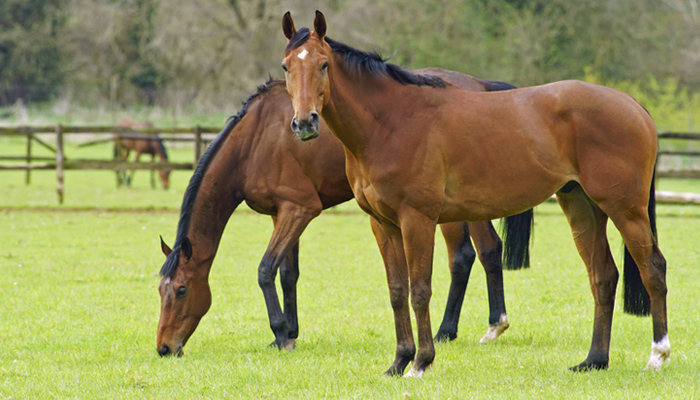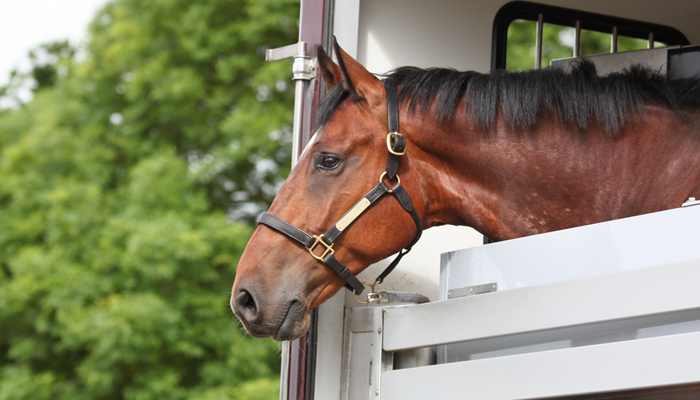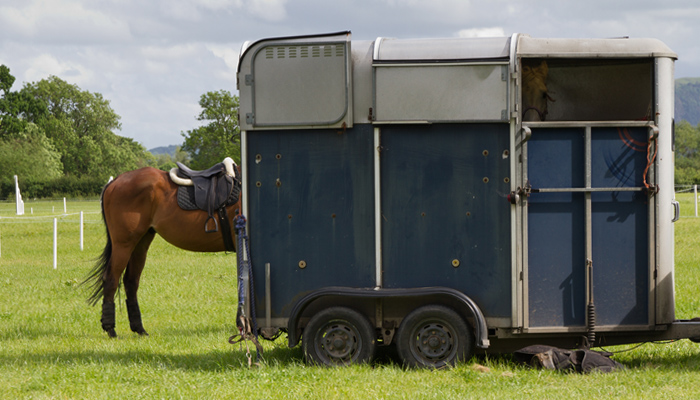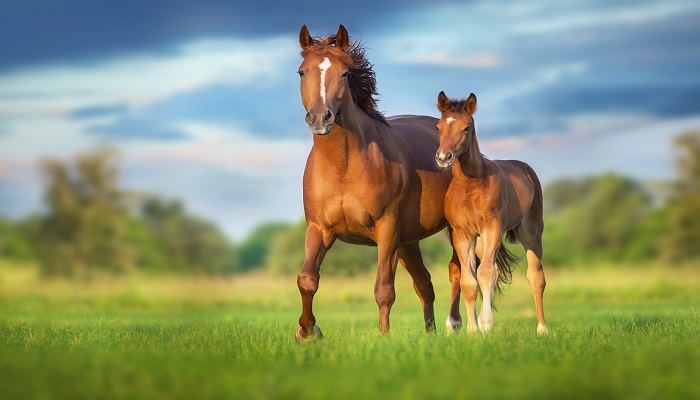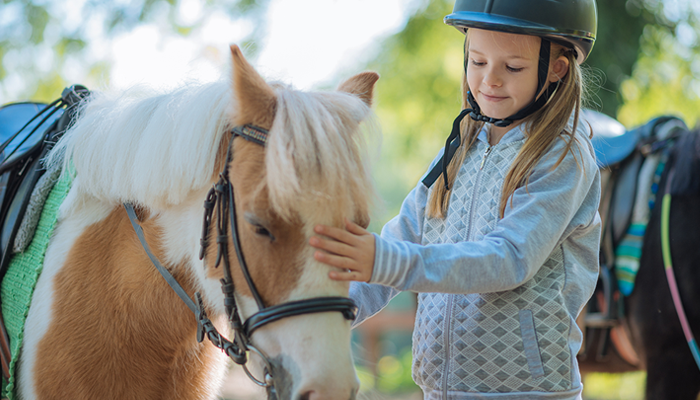What is Rain Rot in Horses?
In this guide, we’re find out what you need to know about rain rot in horses.
What is rain rot / rain scald in horses?
Rain rot - also known as rain scald or dermatophilosis - is a dermatological skin disease which affects horses, cattle, sheep, goats, pigs and even, on occasion, cats and dogs.
Rain rot, also known as rain scald, is a bacterial skin infection in horses caused by Dermatophilus congolensis. It typically occurs when a horse's skin is exposed to prolonged moisture, such as rain or high humidity, which weakens the protective barrier of the skin. This allows bacteria to invade and cause scabby lesions, often accompanied by hair loss.
The condition is most commonly seen on areas of the horse's body exposed to rain, like the back, neck, and head. While rain rot is not life-threatening, it can be uncomfortable for the horse and may lead to secondary infections if left untreated. Proper care, including keeping the horse dry and using antibacterial treatments, can help prevent and manage rain rot.
What causes rain rot?
Rain rot is caused by a bacterial infection known as Dermatophilus congolensis, which also causes mud fever.
Rain rot most commonly occurs during the rainy season, when the Dermatophilus congolensis is active. Typically, this bacteria lives on the horse’s coat without being bothersome. It is only when wet and humid conditions create the perfect environment for the bacteria to multiply that it becomes an issue for horses and owners.
Is rain rot contagious?
Rain rot can be contagious, but it usually requires specific conditions to spread. The bacteria can transfer between horses through direct skin contact or shared equipment, such as grooming tools, blankets, or tack, especially if they aren't properly cleaned. However, the infection thrives in moist environments, so horses in the same wet, muddy, or unhygienic conditions are at higher risk of developing rain rot.
To minimise the chance of spreading it:
- Keep grooming tools and equipment clean.
- Avoid sharing items between horses, particularly if one shows signs of rain rot.
- Address affected horses promptly to prevent the infection from worsening or spreading.
What are the symptoms of rain rot in horses?
The earlier you spot rain rot, the better. Symptoms of rain rot include:
- The skin becoming inflamed.
- Scabs beginning to form along the horse’s neck, back and hindquarters.
- Tufts of hair coming off with the scabs. The tufts tend to resemble paintbrushes.
- Yellow pus appearing beneath the scabs.
To ensure your horse has rain rot, and not a different skin condition, reach out to your vet to take a sample to properly diagnose the problem and in turn, provide the proper treatment.
How do you treat rain rot in horses?
If you discover that your horse has rain rot you should shelter it from the wet and muddy conditions by moving them into stables.
From there you will need to treat the affected areas with antibacterial cleanser and antibiotic creams to help the wounds heal. In some severe cases, horses may be given oral antibiotics that a vet can provide.
When treating the area, it is worth noting that the scabs can be sensitive to pain. If removing the scabs, it may be necessary to sedate the animal.
How do you prevent rain rot in horses?
Due to the unpredictable weather in the UK, horses are more susceptible to rain rot. However, consistent care and attention go a long way in preventing it, and here are some steps you can take to minimise the chance of rain rot:
- Minimise the animal’s exposure to moisture.
- If possible, bring your horses inside during rainy spells and dry off your horse’s coat promptly if it gets wet.
- Be vigilant for small wounds.
- Make sure your horse is regularly bathed and groomed.
- After any hacks, make sure to wash any mud off your horse.
- Clip your horse’s coat regularly to speed up drying.
- Avoid creating a sweaty environment by keeping any rugs waterproof and well-ventilated.
- Avoid using any grooming kit or tack that has been used on an infected horse on any others.
Depending on the severity of the case it can be difficult to determine how quickly you can get on top of this skin disease.
Equine insurance from Towergate
Towergate offers horse insurance that can be tailored to suit you and your horse. Read more about our equine insurance and what we can cover.
If you have any questions about rain rot and how it impacts your equine insurance, please contact our friendly team of specialists on 01536 486 060.
About the author

Adam Summersby is a respected leader with 11 years’ varied experience in niche personal and commercial lines insurance, including caravan, site operators and excess reimbursement, with proficiency in leadership, sales and account management.
Consistent with our policy when giving comment and advice on a non-specific basis, we cannot assume legal responsibility for the accuracy of any particular statement. In the case of specific problems we recommend that professional advice be sought.
Date: May 30, 2025
Category: Equine





